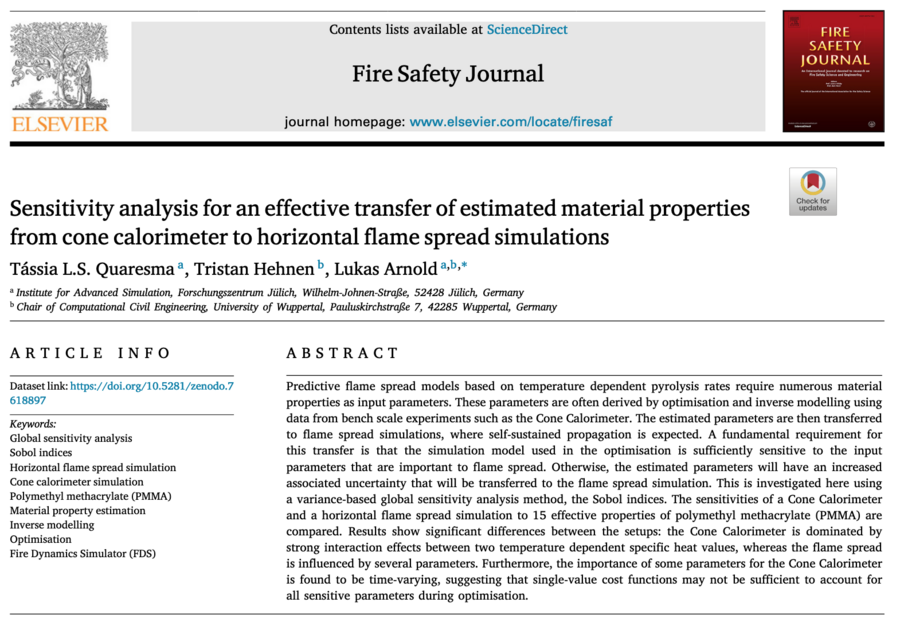Neue Publikation – Unsicherheiten in Cone Calorimeter und Brandausbreitungssimulationen

Eine neue Veröffentlichung von uns ist im Fire Safety Journal erschienen. Der volle Artikel ist hier frei verfügbar.
Titel: Sensitivity analysis for an effective transfer of estimated material properties from cone calorimeter to horizontal flame spread simulations
Autoren: Tássia L.S. Quaresma, Tristan Hehnen und Lukas Arnold
Abstrakt:
Predictive flame spread models based on temperature dependent pyrolysis rates require numerous material properties as input parameters. These parameters are often derived by optimisation and inverse modelling using data from bench scale experiments such as the Cone Calorimeter. The estimated parameters are then transferred to flame spread simulations, where self-sustained propagation is expected. A fundamental requirement for this transfer is that the simulation model used in the optimisation is sufficiently sensitive to the input parameters that are important to flame spread. Otherwise, the estimated parameters will have an increased associated uncertainty that will be transferred to the flame spread simulation. This is investigated here using a variance-based global sensitivity analysis method, the Sobol indices. The sensitivities of a Cone Calorimeter and a horizontal flame spread simulation to 15 effective properties of polymethyl methacrylate (PMMA) are compared. Results show significant differences between the setups: the Cone Calorimeter is dominated by strong interaction effects between two temperature dependent specific heat values, whereas the flame spread is influenced by several parameters. Furthermore, the importance of some parameters for the Cone Calorimeter is found to be time-varying, suggesting that single-value cost functions may not be sufficient to account for all sensitive parameters during optimisation.
